Introduction
Sattriya Dance has its origin in the ‘Sattras’ established by Mahapurush Srimanta Sankardev in the 15th and the 16th century. The Sattras were established for the propagation of Vaishnavism and later they became the religious, cultural and social hub for the people of Assam. The great Vaishnavite Saint has developed this dance form with its basic roots aligned with the characteristics of other forms of Indian classical dance. Initially a part of the ‘Ankia Naats’, this dance form derived its name from the word ‘Sattra’ .This dance form was originally performed in the Sattras and the Namghars by the male Bhokots as a part of religious rituals and for spreading the philosophy of Vaishnavism and was confined within the four walls of the sattras for several centuries.
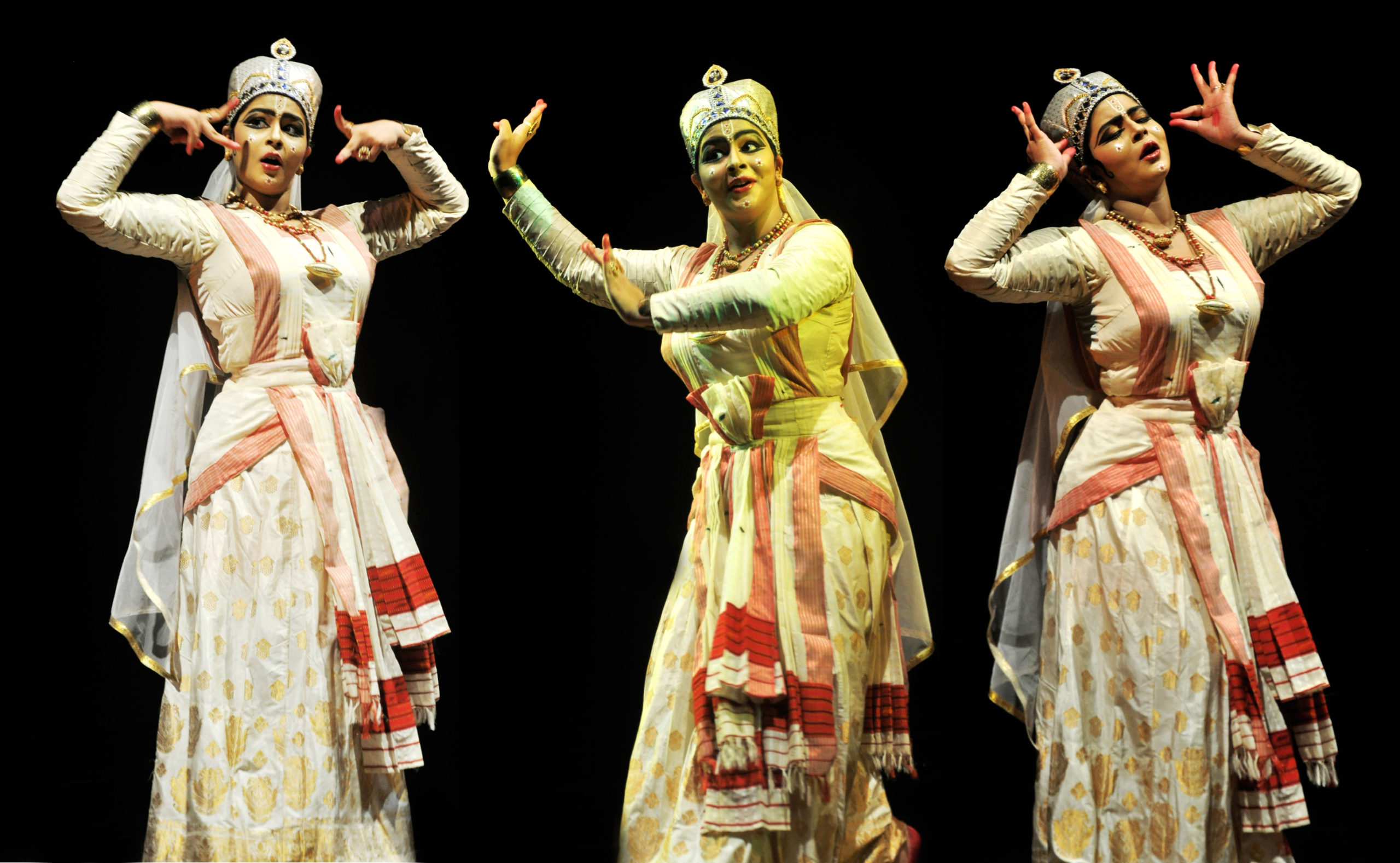
Later eminent personalities and reformers like Late Moniram Dutta Muktiyar Barbayan, Late Roseshwar Saikia Barbayan, Late Dr. Maheswar Neog , Late Dr Bhupen Hazarika, Late Ananda Mohan Bhagawati to name of few contributed in developing and bringing the Sattriya dance to the outer world. A revolutionary change took place, when female dancers started performing this art form, which was earlier prohibited. Finally in 15th November 2000 , the Sangeet Natak Akademi declared Sattriya Dance as a classical dance form of India.
The Dance Style
Enriched with the classical elements and its basics related to the ‘Natyashastra’ , ‘Srihastamuktawali’ , ‘Abhinaya Darpan’, Sattriya dance has reached a different horizon from its origin in the Sattras. Various research and creative works has given this dance form a newer style.In the recent times, major development has been seen in the choreographic styles, costumes and stage presentation, making this dance form more dynamic as a performing art.
The Sattriya dance can be classified into two styles, namely ‘Paurashik Bhangi’ i.e. Tandava or Masculine style and ‘Stri Bhangi’ i.e. Lashya or feminine style.
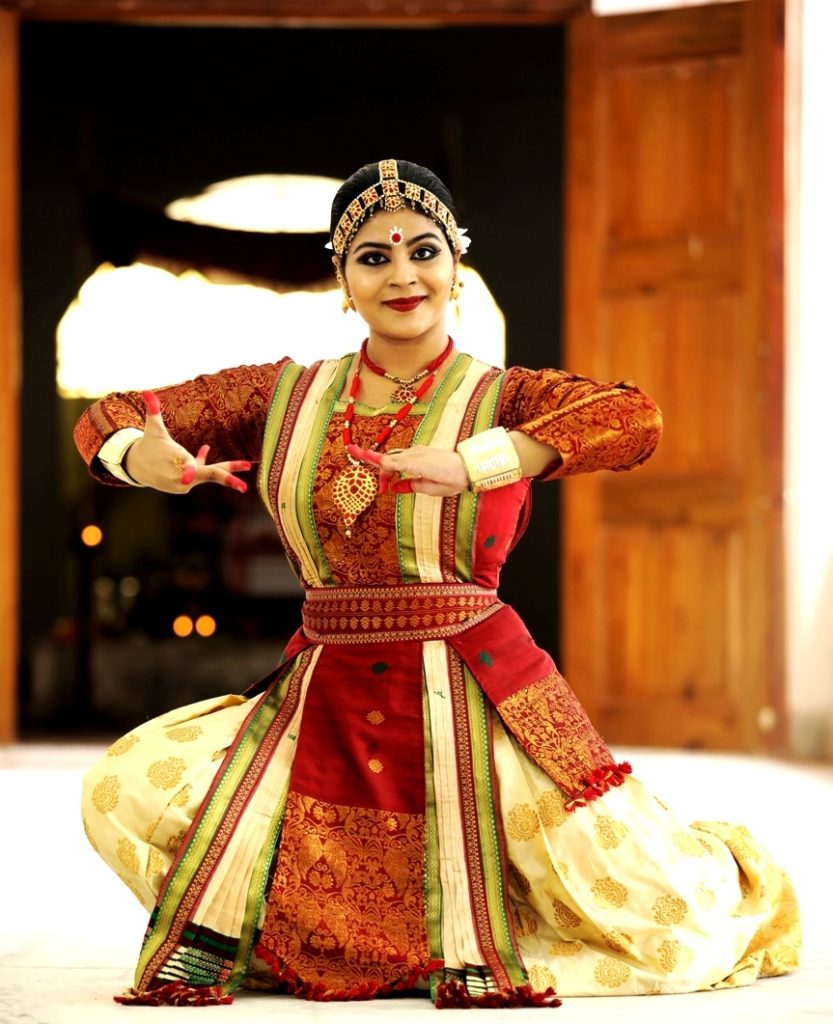
Six types of Anga (Limb), six types of Pratyanga, six types of Upanga (Lower limb), nine different types of Gatived (Movement), eight types of Dristived (Eye movement), nine types of Shiraved (Head movement), four types Gribaved (Neck movement) are found in Sattriya dance. The musical instruments used in Sattriya are the Khols or the Drums, the Taals or the Cymbals and the Flute. Non traditional music instruments like Mridangam and Pakhwaj were a part of the music of Rojaghoria Chali Dance. In present time, violin is also commonly used in the music of Sattriya Dance.
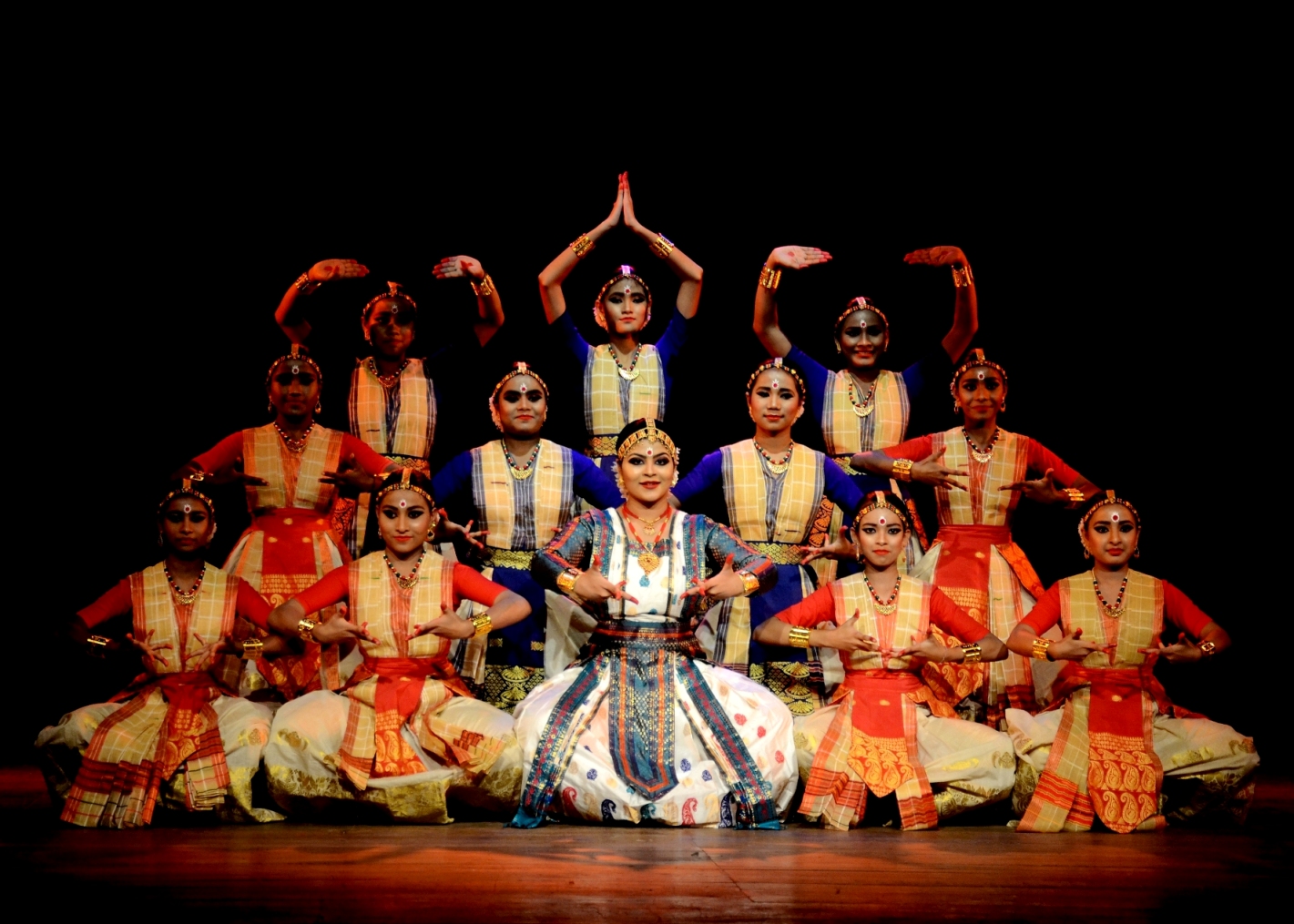
Different forms of dances
Mati Akhara
Krishna Nritya
One of the major dances in Sattriya is the Krishna Nritya which portrays the activities of young Krishna. Krishna Nritya is a pure dance performed in Sutataal. Normally, yellow colored dhoti, blue shirt or blouse, headgear with peacock feather forms the basic costume of Krishna Nritya.
Nadubhangi
Another dance style based on the life of Lord Krishna, Nadubhangi Nritya covers the story of Lord Krishna defeating the poisonous snake ‘Kaliya’ and also other stories related to Him. The Nadubhangi Dance has two parts- Ramdani and Geetor Naach, wherein the pure dance is performed with songs in the Geetor Naach. Rakta Taal, Poritaal, Jaman Taal, Suta, Melajyoti, Chutkala, Jatitaal are used in Nadubhagi dance. The costume of this style mainly comprises of yellow colored dhoti, black or blue shirt or blouse, Kanchi (waist belt) and headgear decorated with ‘Kalki’.
Jhumura
Jhumura is a pure dance having its origin in the ‘Jhumura Naat’ of Sri Sri Madhavdev. It uses masculine postures and style and has three parts- Ramdani, Geetor Naach and Mela Naach. The costume of Jhumura dance consists of Paguri or turban, laced shirt or blouse, white dhoti etc.
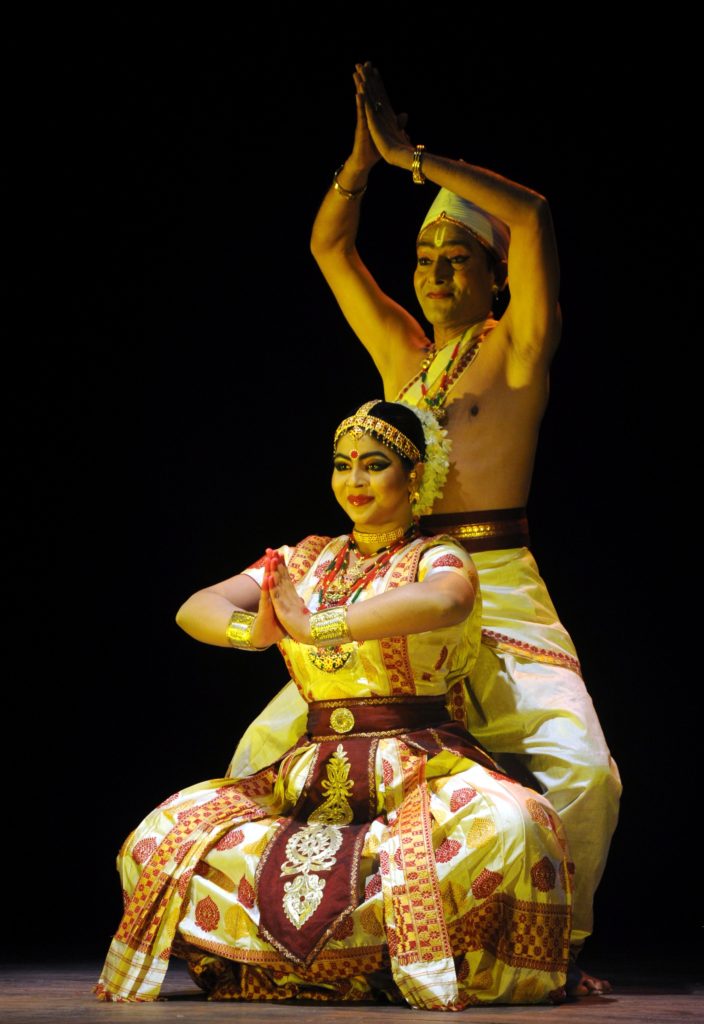
Chali
It is believed that the Chali Naach has its connection with the dancing peacock which is also mentioned in the Bhagavad. Under the guidance of Sri Sri Madhavdev, male dancers dressed as female performed this dance in Barpeta. The Chali dance is of two types – the pure style and secondly the Rojaghoria style which developed in the post Sankarian time. There are eight Ramdanis in pure Chali and in the recent times abhinaya is also included in Chali Naach.
Rojaghoria
Behar Nach
Sutradhari
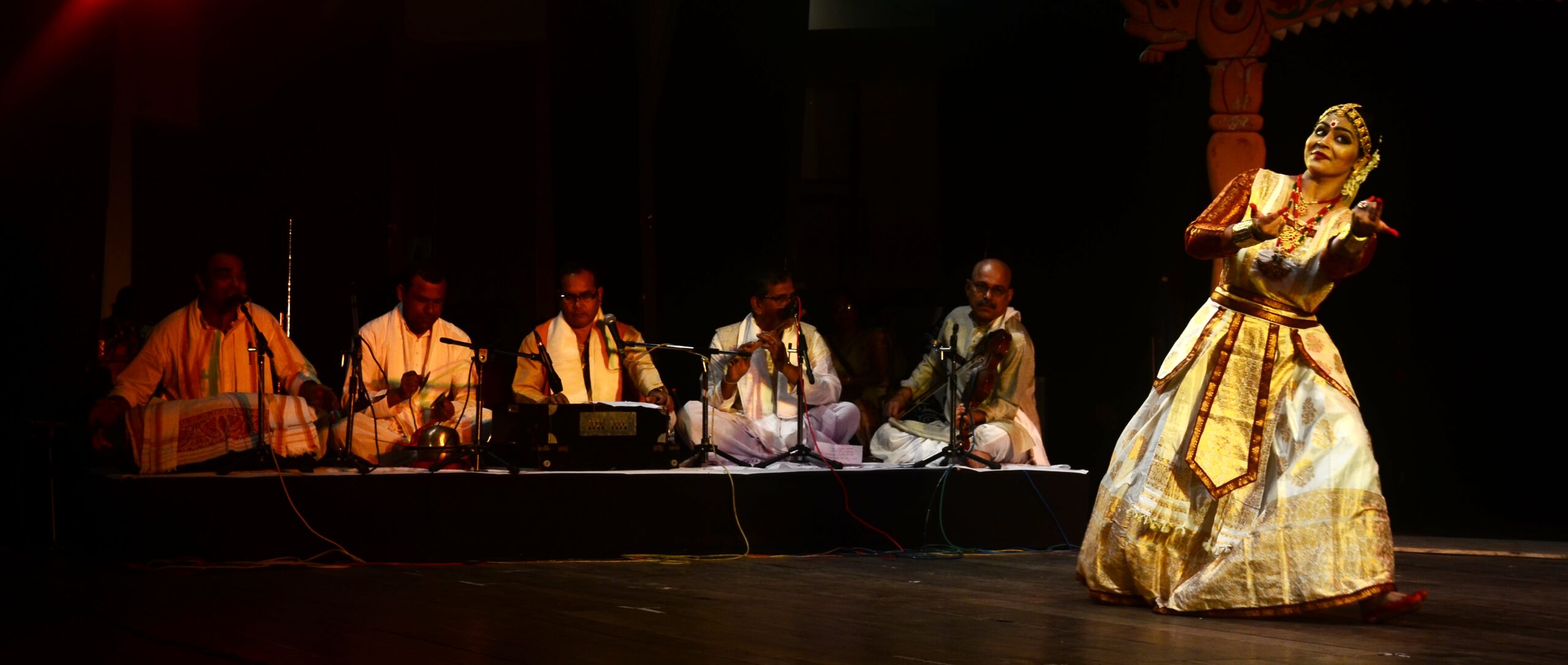
Bor Prabesh
Gosain Prabesh
Gopi Prabesh
Ojapali
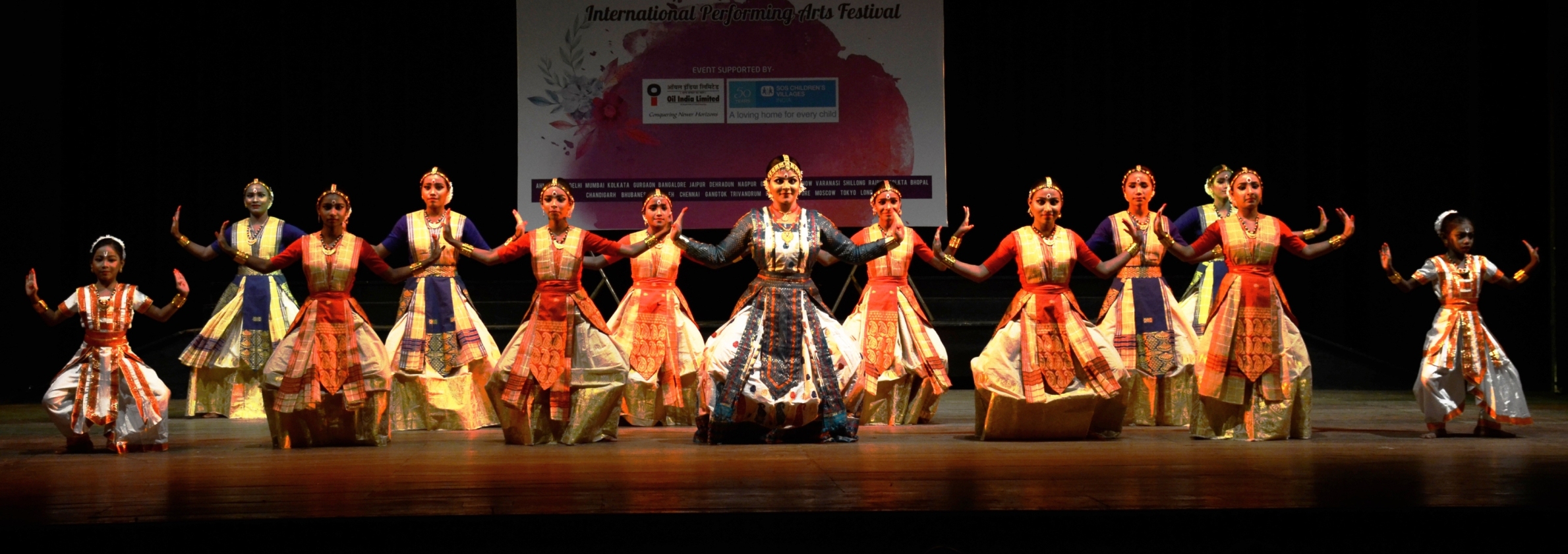
Sattriya Dance costume
The costume of Sattriya dance is primarily of two types: the male costume comprising the dhoti and chadar and the paguri ( turban) and the female costume comprising the ghuri, chadar and kanchi (waist cloth). Traditionally the costumes were of white or raw silk color with use of red, blue and yellow for specific dance numbers. In earlier times velvet and satin materials were mostly used for the costumes. With change of time, as this dance form evolved from the sattras onto stage, the design and materials of the dance costumes changed. Pat (also spelled paat) – a silk produced in Assam which is derived from the mulberry plant and muga ( golden silk of Assam) is also used in preparing the dance costume. Other brilliant colours are also used in the female costumes. These hand-woven materials normally have intricate local motifs like Kingkhap, Miri Motif, Kolka etc
Uses of play-specific costumes are also seen in Sattriya dance. The dress of Krishna Nritya and Nadubhangi Nritya is of yellow and blue keeping in line with the attire of Lord Krishna. The Sutradhar Nritya also has its specific white costume with a special turban.
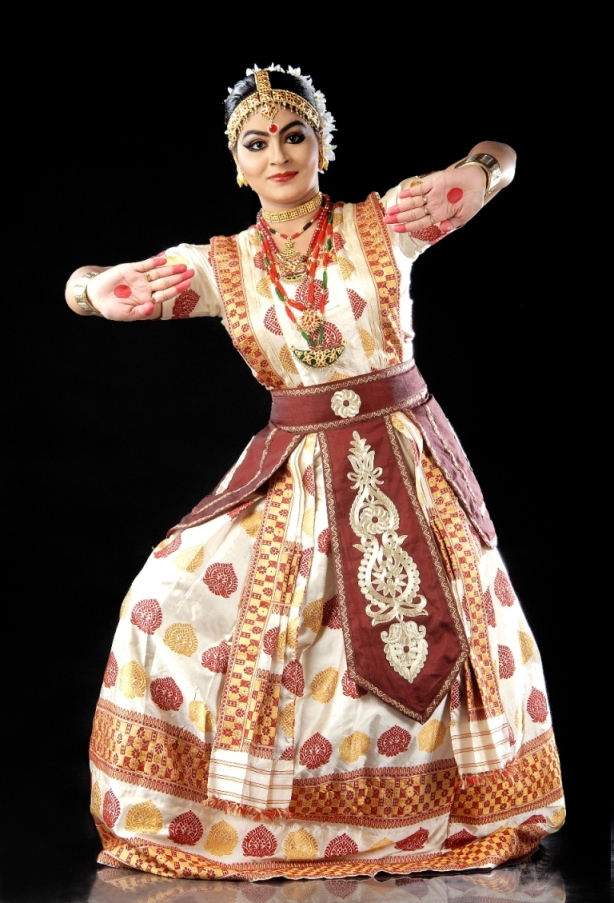
Sattriya dance female costume made of Assam Pat silk and traditional Assamese jewellery: Kopali on the forehead, Muthi Kharu (bracelets), Thuka Suna (earrings) and Golpata, Lokaparo, Senpota and Bena (necklaces).
Traditional Assamese jewellery is used in Sattriya dance. The jewelleries are made in a unique technique in Kesa Sun ( raw gold). Artists wear Kopali on the forehead, Muthi Kharu and Gam Kharu (bracelets), different type of neck pieces like Mata Moni (for male dancers), Golpata, Dhulbiri (shaped like the musical instrument dhol), Bena (pendant shaped like a crescent), Jethipata (lizard shaped), Dugdugi (leaf shaped), Senpata (eagle shaped), Dhansira (strand of rice grain), Lokaparo (pegion design). Earrings are made in similar designs and also Thuka Suna and Keru are worn by dancers. Female dancers wear white flowers in the hair.
The costumes of Ankiya Naats (dramas) are colourful and character specific. Use of Mukha (Masks) to depicts demons and special characters are also unique of this dance form. The art of mask making is an integral part of Sattriya culture and originated in the Sattras of Assam. Beautifully decorated turbans and crowns made by the local artisans are used in the Ankiya Naats.
The facial makeup of Sattriya dance resembles other classical dance forms of India. However in earlier times traditional materials and herbs were used for make up.
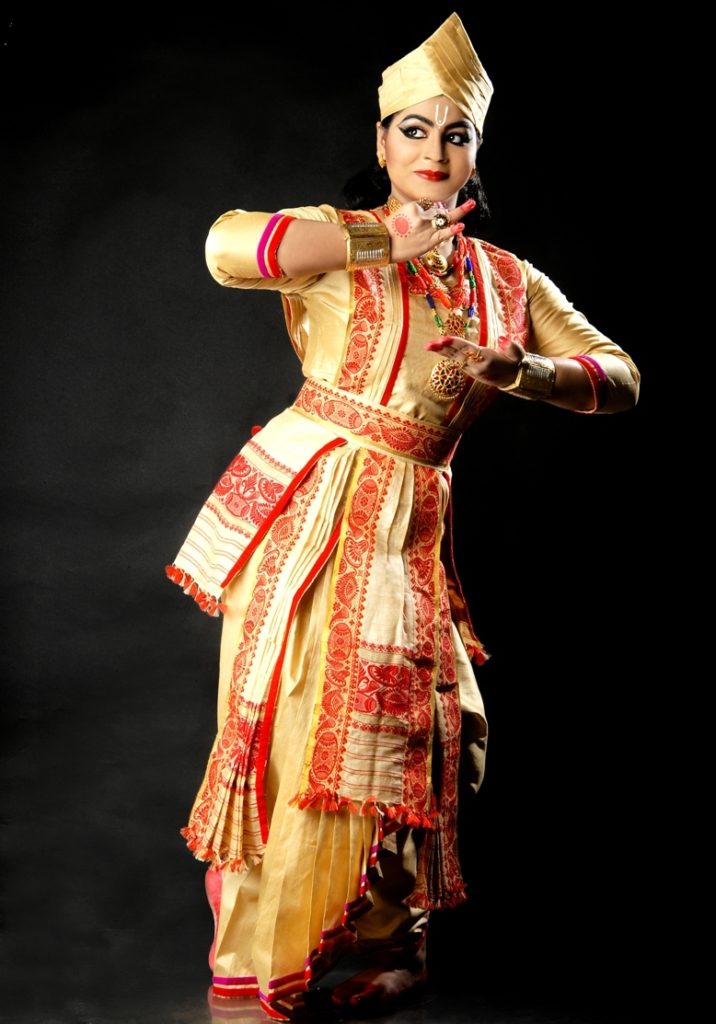
The male costume
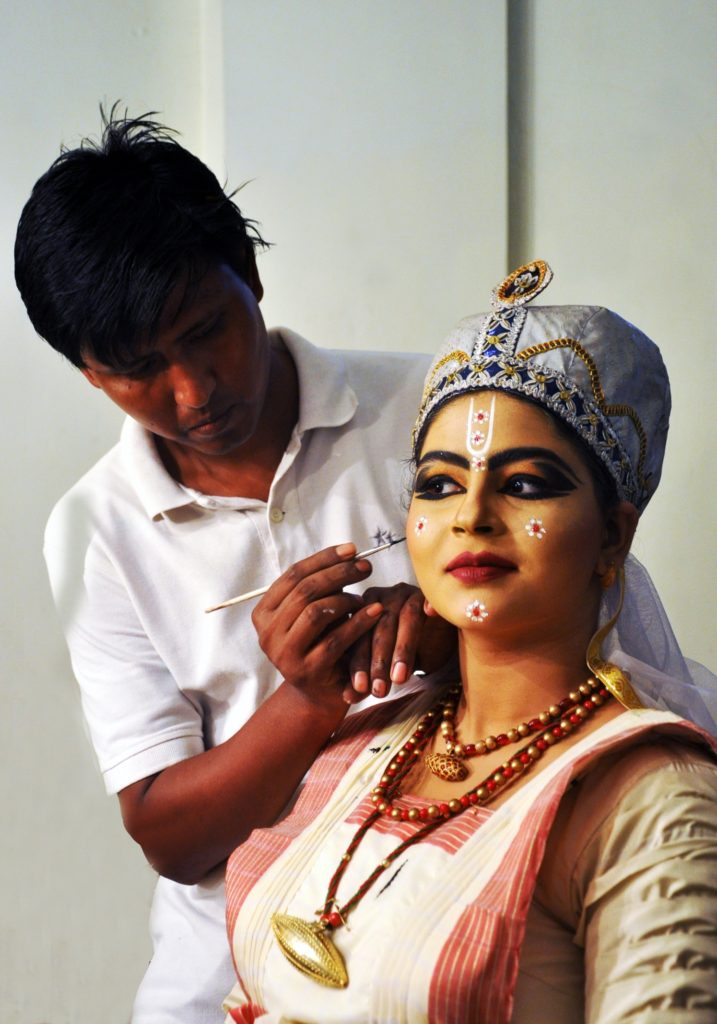
Traditional makeup of The Sutradhar
Navarasa in Sattriya Dance
The Rasas are the mainstay of Performing Art, which tries to present various phases of human life. The state of rasa is established due to bhava which is the cause of emotion. Every rasa corresponds to a particular bhava and is about human state of mind. Rasa encompasses not just emotions but also the various things that cause that emotion.
The Navarasas give dance completeness. ‘Nava’ means nine and ‘Rasa’ means emotions. The concept of rasa is fundamental to various forms of Indian Classical Dance and Music.
Shringara Rasa (Love)
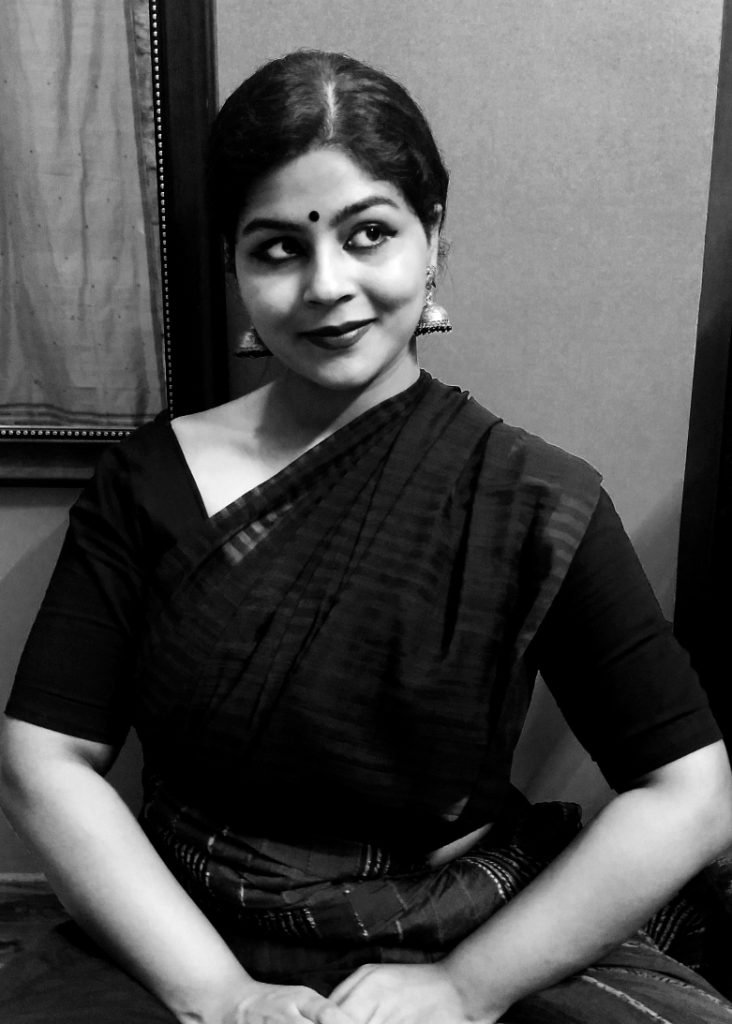
Shringara is the rasa of love, art, beauty and spiritual devotion. It is the king of all rasas and the one that finds the most frequent portrayal in various art forms. The mood of Shringara has two aspects, the feeling of love in union (Sambhoga Shringara) and in separation (Bipralamba Shringara). The act of Lord Krishna and the gopikas in the Keligopal Naat by Mahapurush Srimanta Sankardev is a true example of Shringara Rasa in Sattriya culture.
Hasya Rasa (Laughter)

Hasya is the rasa of joy with humor as it’s most common expression. Pure Hasya is real happiness, a joy that comes from within. This rasa is used to depict simple happiness or riotous laughter and everything in between. The glimpses of this rasa can be found in the act of Lord Krishna in the Keli Gopal Naat and also in Rukmini Haran Naat written by the Great Vaishnavite Saint.
Karuna Rasa (Sorrow)
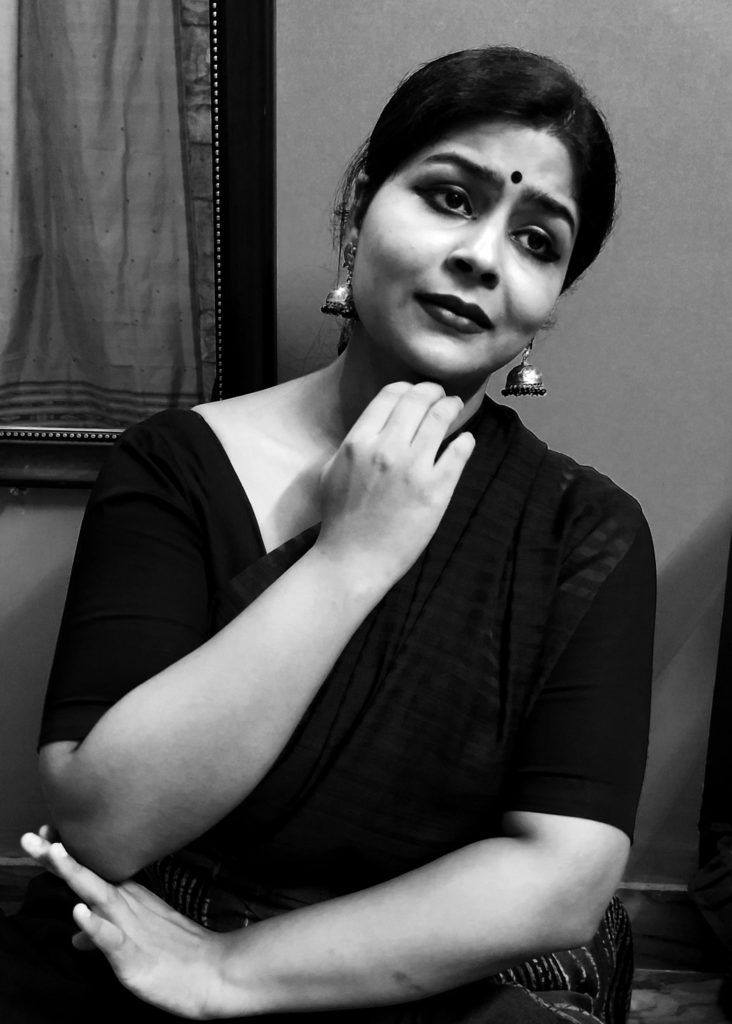
The Karuna is a rasa of sadness, grief and compassion. The feeling of tragedy and despair, heartbreak, sorrow caused by parting with a lover, the suffering caused by the death of a loved one are all karuna. While the highest karuna is compassion, the original Sanskrit word Karuna means sadness. The Karuna Rasa was amply used in various Naats by Mahapurush Srimanta Sankardev. In Parijat Haran when Satyabhama heard that Krishna had given the Parijat flower to Rukmini her expressions reflected karuna rasa.
Veera Rasa (Courage)
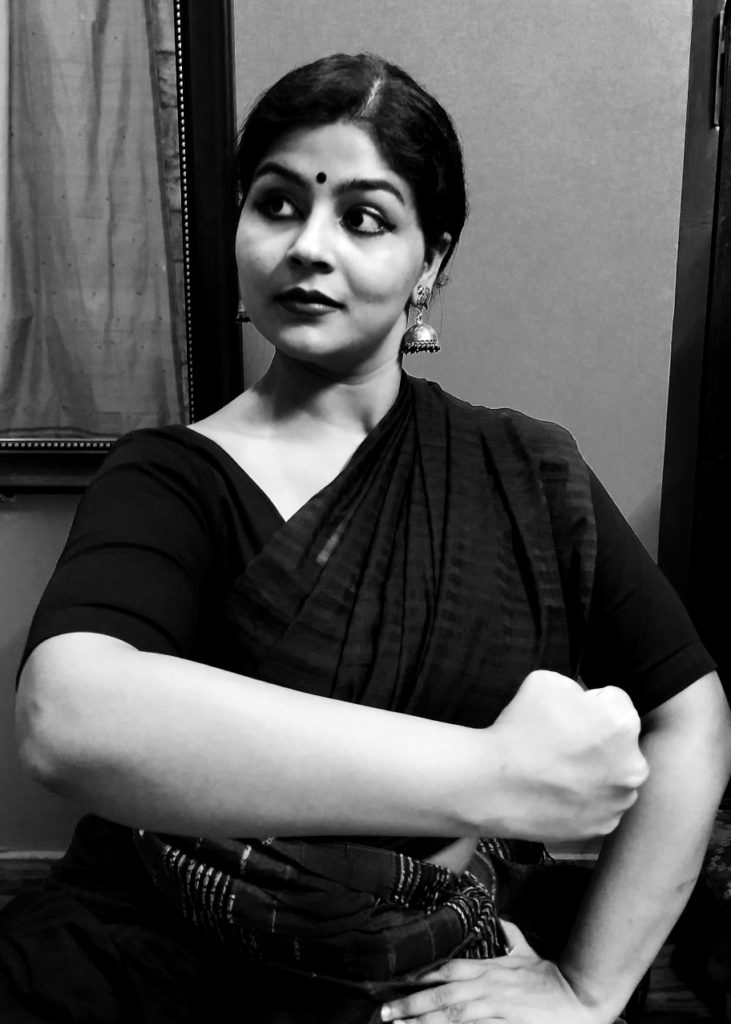
The Veera is the rasa of heroism, bravery, fearlessness, determination and self- confidence. Boldness in battle, the attitude with which warriors go to war, and the valor with which they die are all aspects of heroism. In the Hindu mythology, Abhimanyu displayed a different type of heroism when he went to war knowing fully that he would be severely outnumbered and almost certainly die and yet fought so bravely till his last. In Sattriya Dance and culture, the Veera Rasa is displayed in various characters in Keli Gopal, Kaliyadaman, Patni Prasad, Parijat Haran, Rukmini Haran, Rambijay, Arjun Bhanjan etc
Raudra Rasa (Anger)

The Raudra Rasa depicts anger and is probably the most violent amongst the other rasas. The wrath of kings, the fury caused by an offense, the anger evoked over injustice and disrespect are all forms of Raudra Rasa. The Raudra Rasa is the integral part in presenting the characters of Kansha, Narashingha, Parashurama, Lord Shiva etc.
Bhayanaka Rasa (Terror)
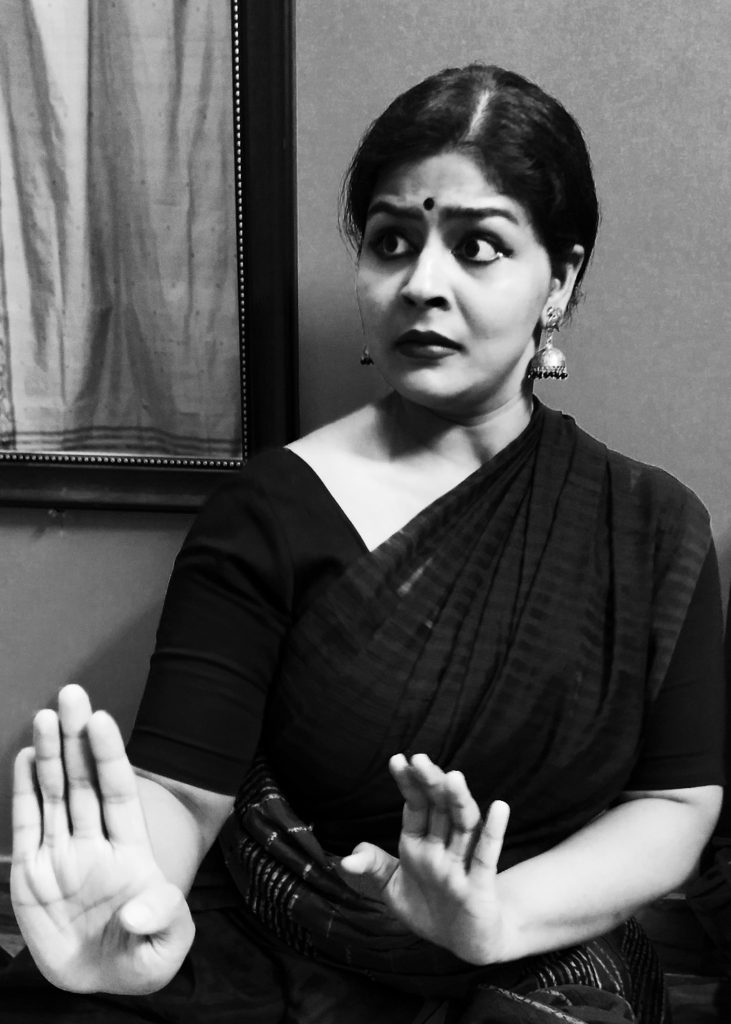
The Bhayanaka Rasa depicts fear, worries and severe anxiety. Bhayanaka is a feeling evoked while facing something that is more powerful than oneself, it’s a feeling of being helpless. The use of Bhayanaka Rasa can be seen in various creations of Mahapurush Srimanta Sankardev including his maiden poetic creation ‘Karatala Kamala’ mentioning that it is Lord Vishnu who eliminates fear from one’s mind.
Beebhatshya Rasa (Disgust)
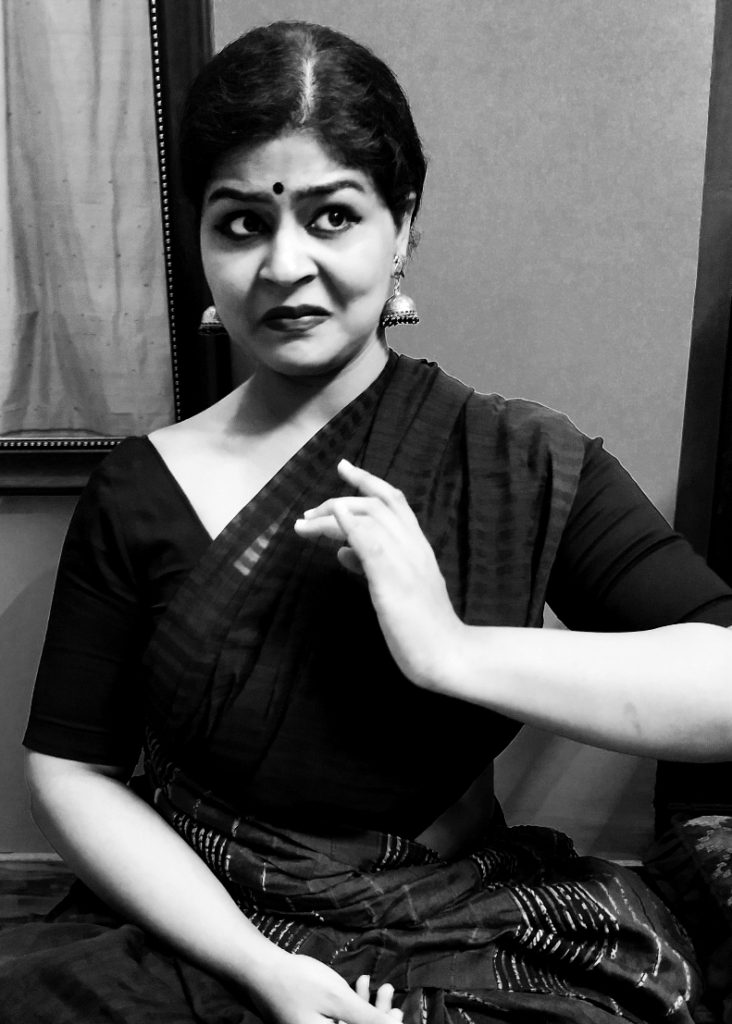
Beebhatshya is the rasa of disgust or dissatisfaction with oneself and others. Vulgar and uncivilized acts, using of bad words and manners evokes an unpleasant feeling which is Beebhatshya. The feeling of disgust in the mind of Prince Siddhartha towards sickness, old age and death later transformed him into Buddha which is one of the avatars of Lord Vishnu.
Adbhuta Rasa (Surprise)
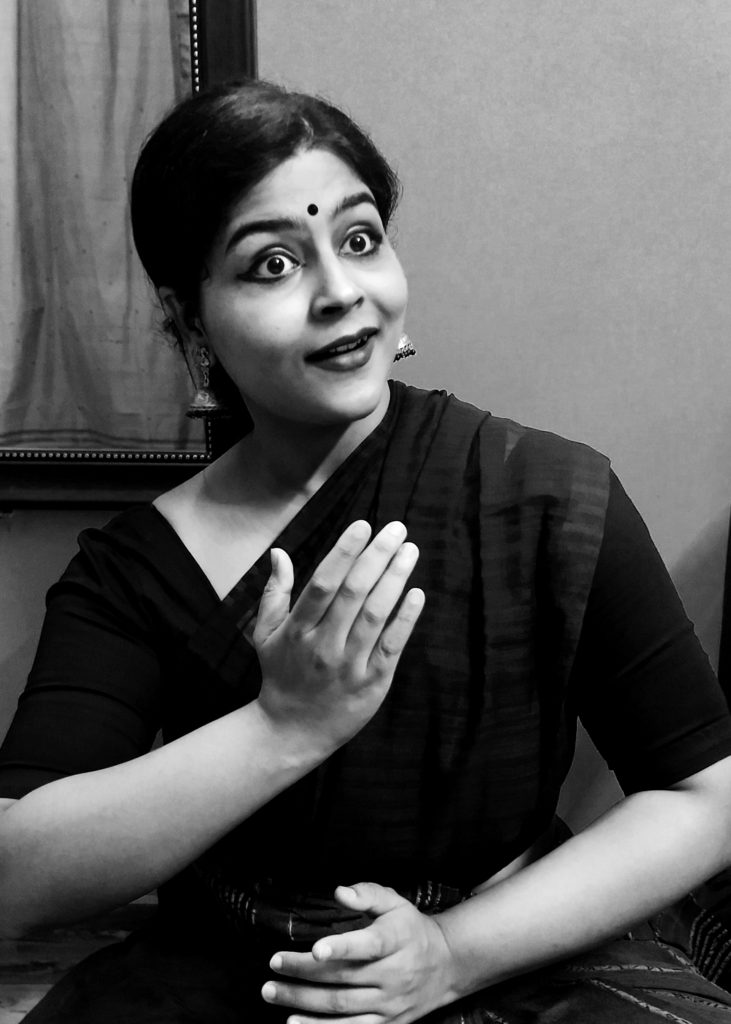
Adbhuta is the rasa of curiosity, astonishment and wonder. The feeling when one comes across something divine and supernatural, something never seen or imagined before is Adbhuta. In Sattriya Dance the Adbhuta Rasa can be seen in the expressions of the courtyards when Sri Rama had broken the Hara Dhanu in Sita’s Swayambar. In the ‘Choordhora Naat’ the expression of Yashodha when she saw the whole universe inside the mouth of little Krishna is also an example of Adbhuta Rasa.
Shanta Rasa (Tranquility)
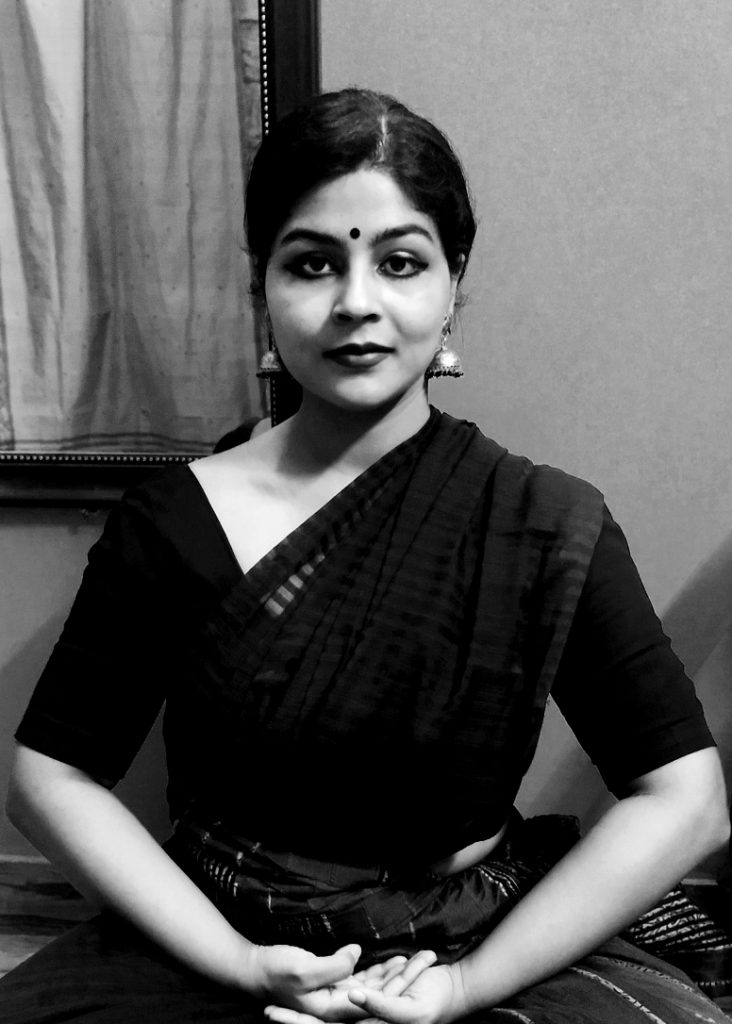
Shanta is the rasa of tranquility and peace. It represents the state of calm and untroubled steadiness. Shanta represents complete harmony between the mind, body and universe. Shanta is what Buddha felt when he was enlightened that led him to salvation or nirvana which freed him from the cycle of life and death.
Dasavatar postures in Sattriya
Whenever dharma or situation of law and order was in danger on the world , Lord Vishnu incarnated onto this world to re-establish Dharma and Peace, law and order and to protect the world from the evil elements of the society. The ten incarnations of Lord Vishnu , popularly known as ‘Dasavatar’ are Matshya – the fish , Koorma –the tortoise, Varaaha– the boar, Narashingha – the man lion , Vaamana – the dwarf , Parashurama , Rama , Halirama, Buddha and Kalki. Description of these avatars are found in the Vaishnavite literature and are usually depicted in Sattriya Dance .
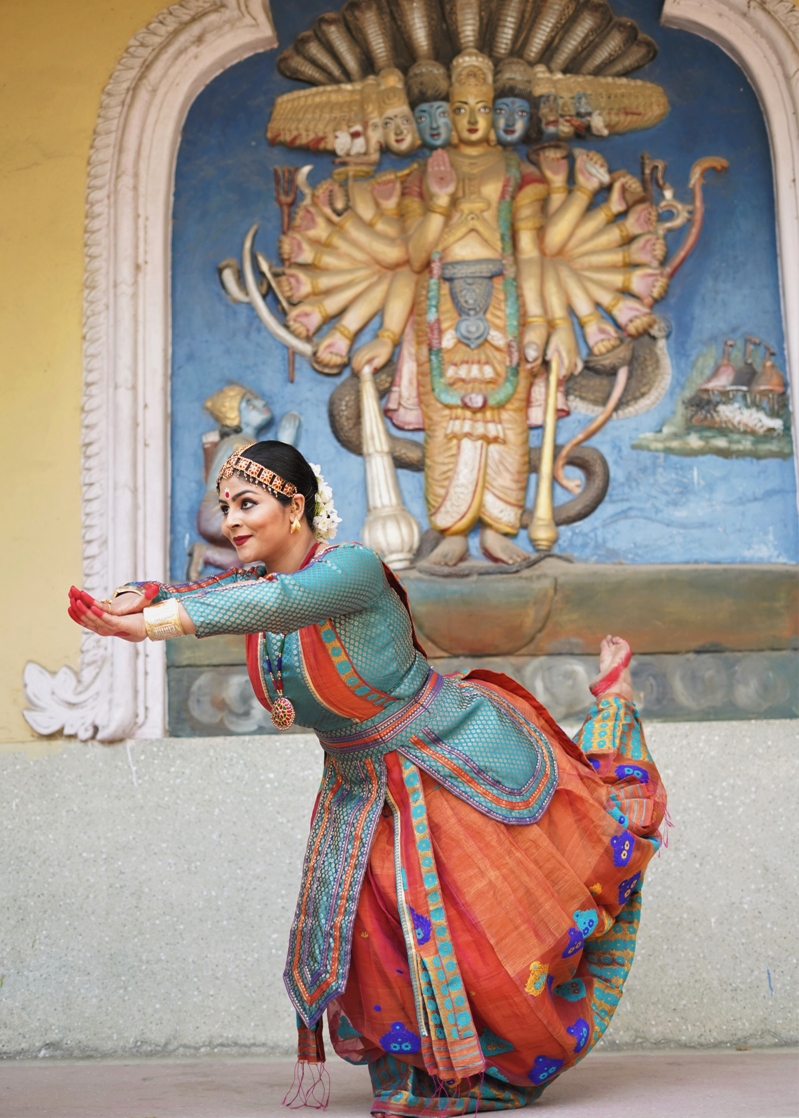
Matshya
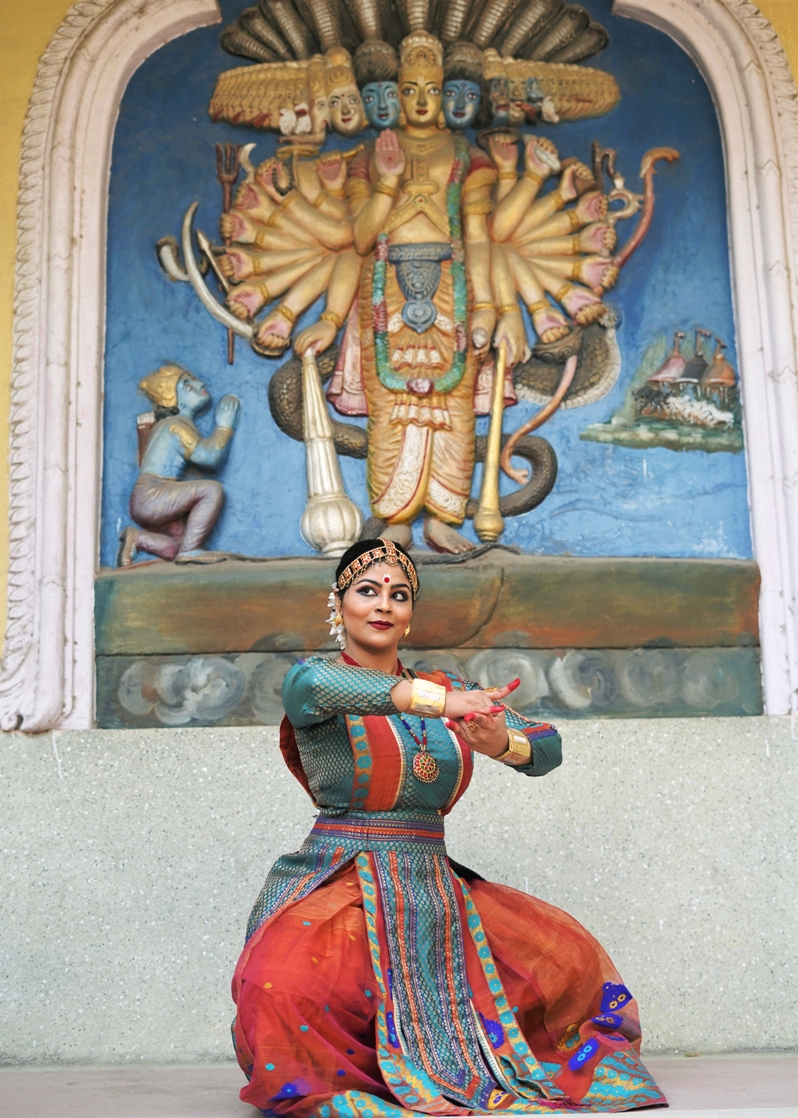
Koorma
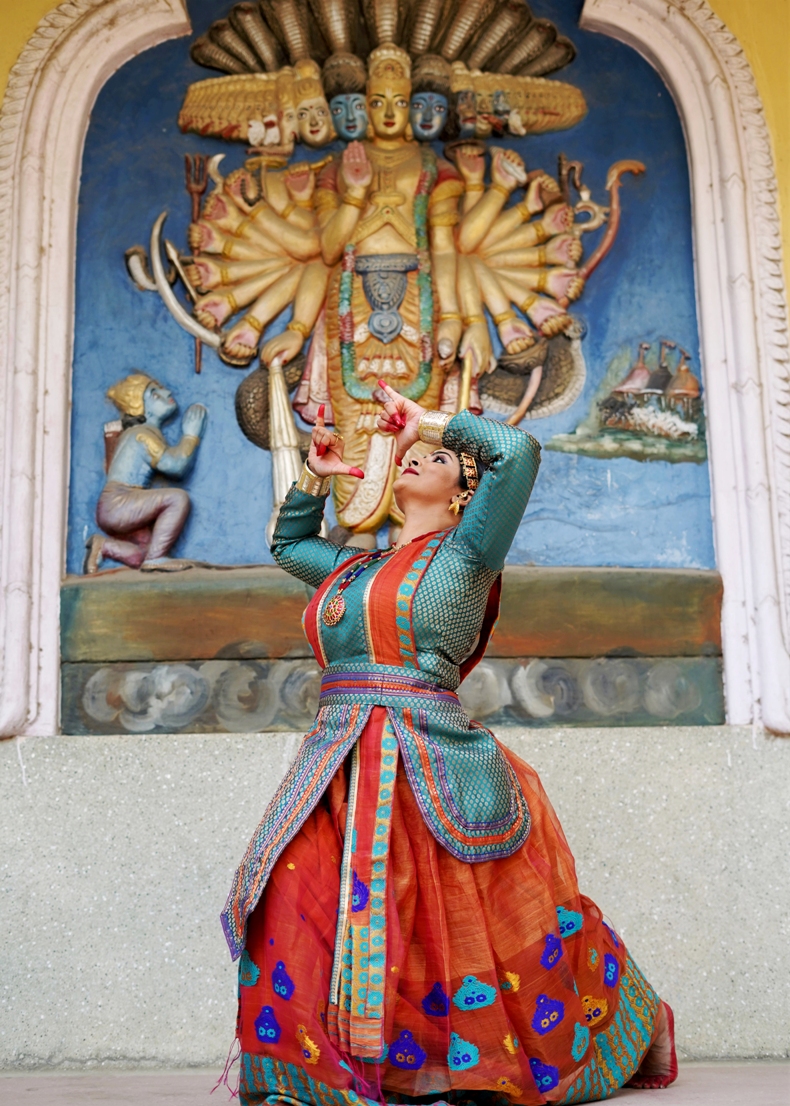
Varaaha
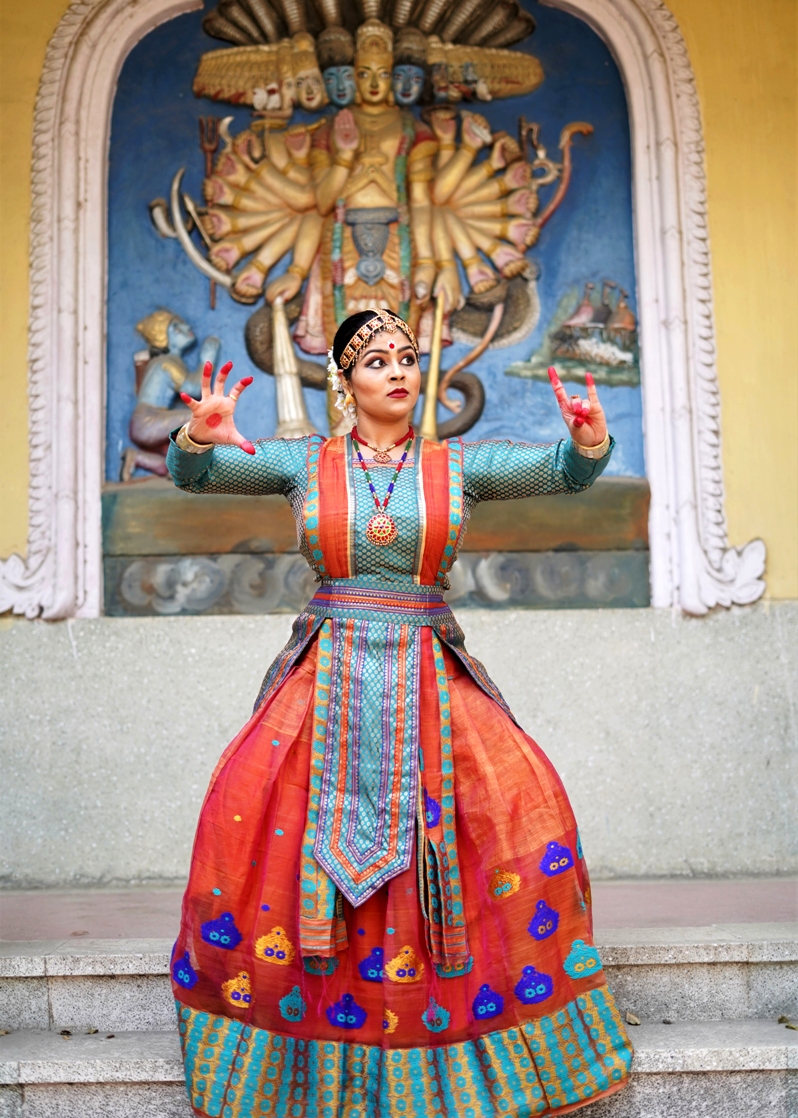
Narashingha
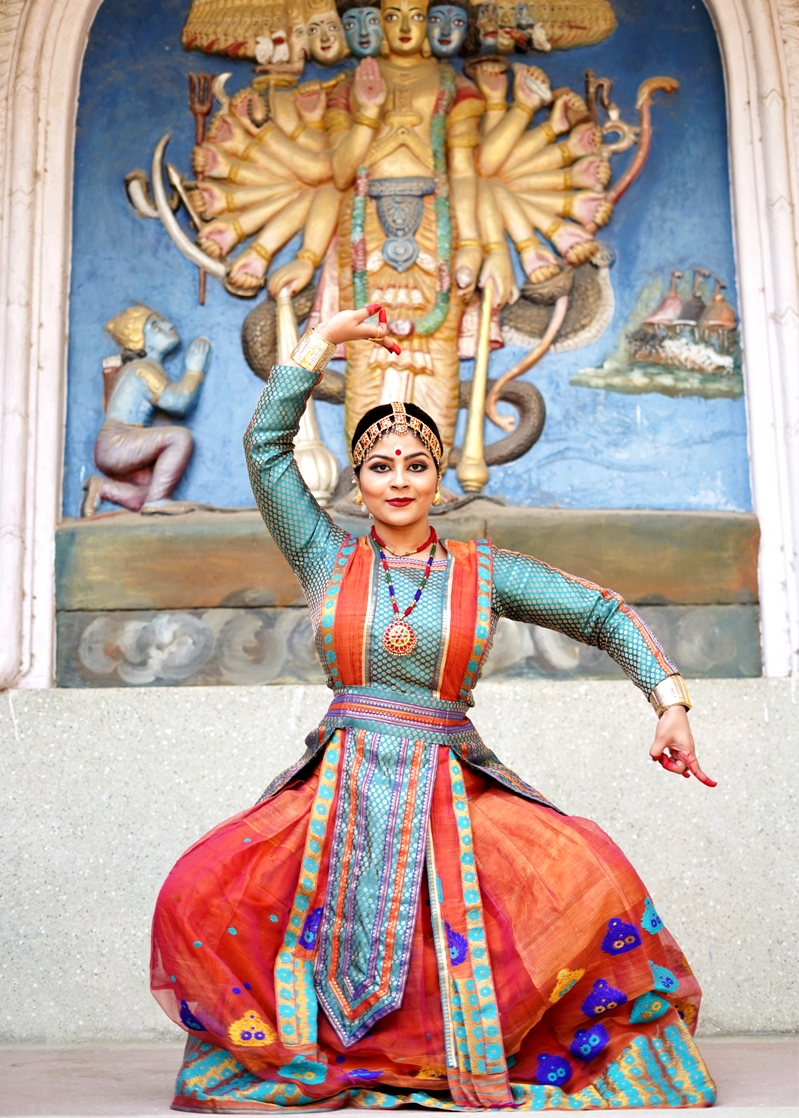
Vaamana
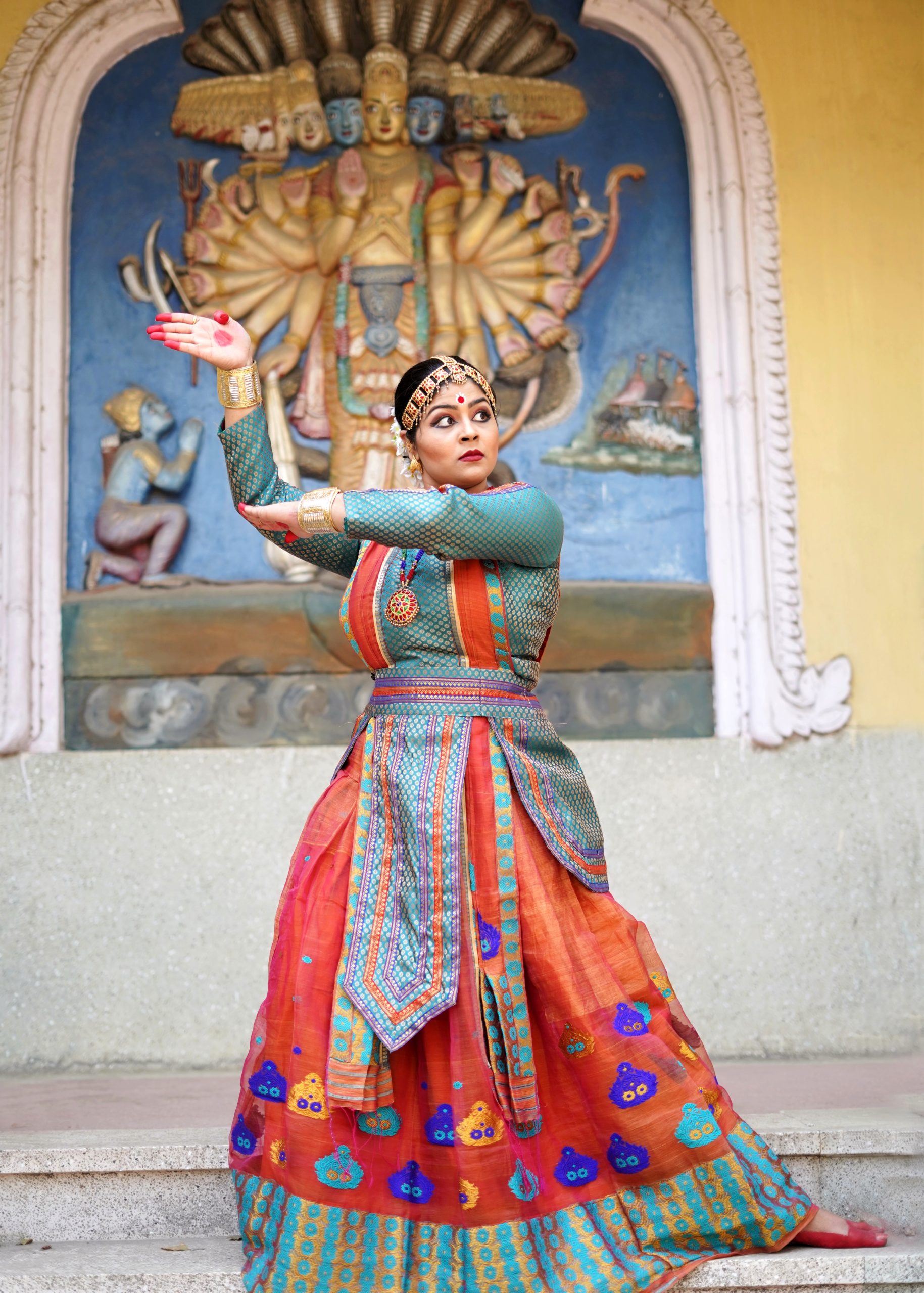
Parashurama
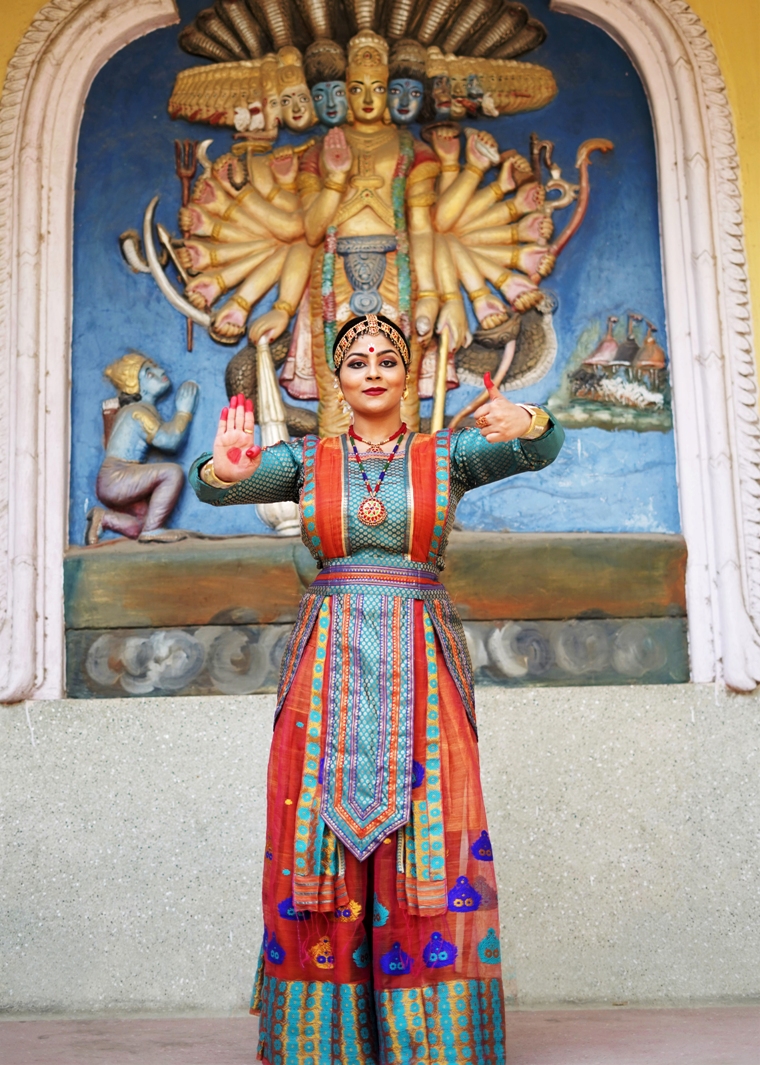
Shri Rama
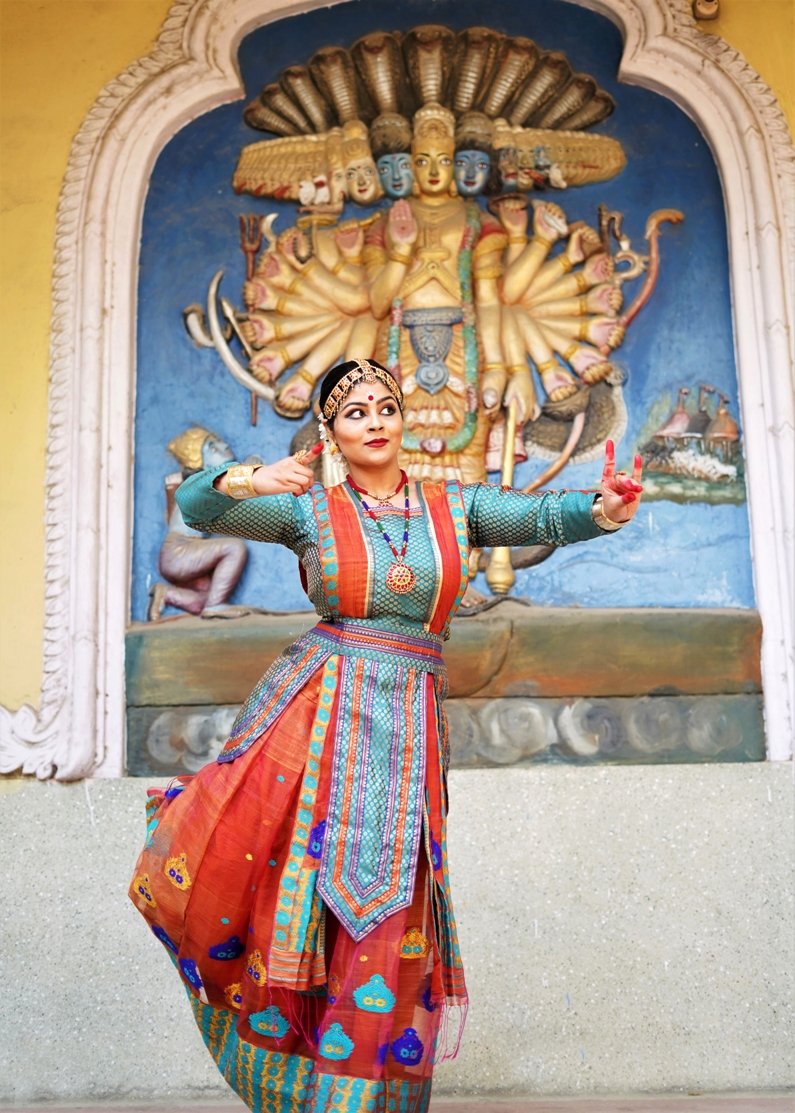
Halirama
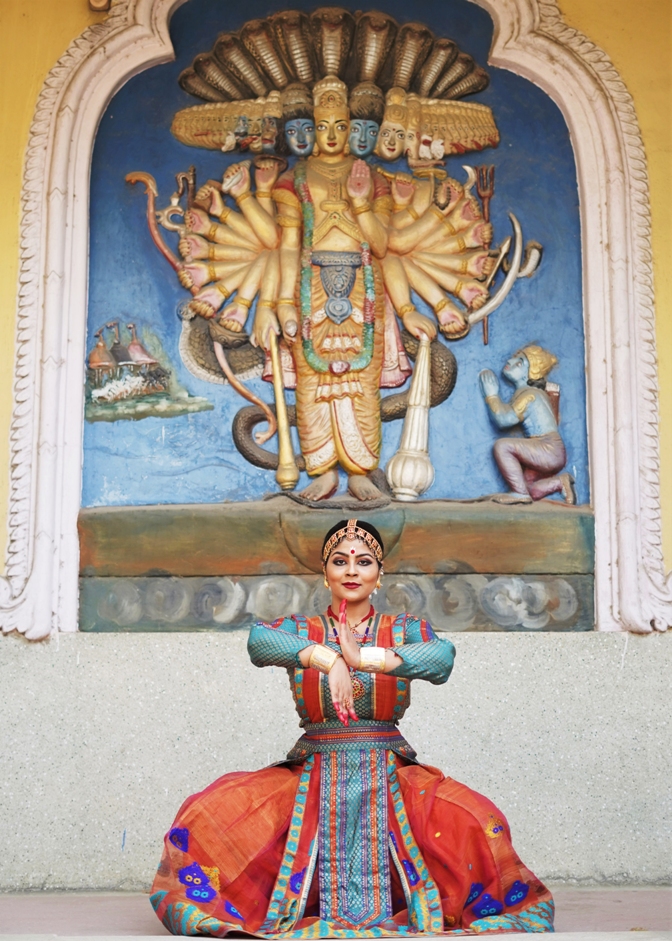
Buddha
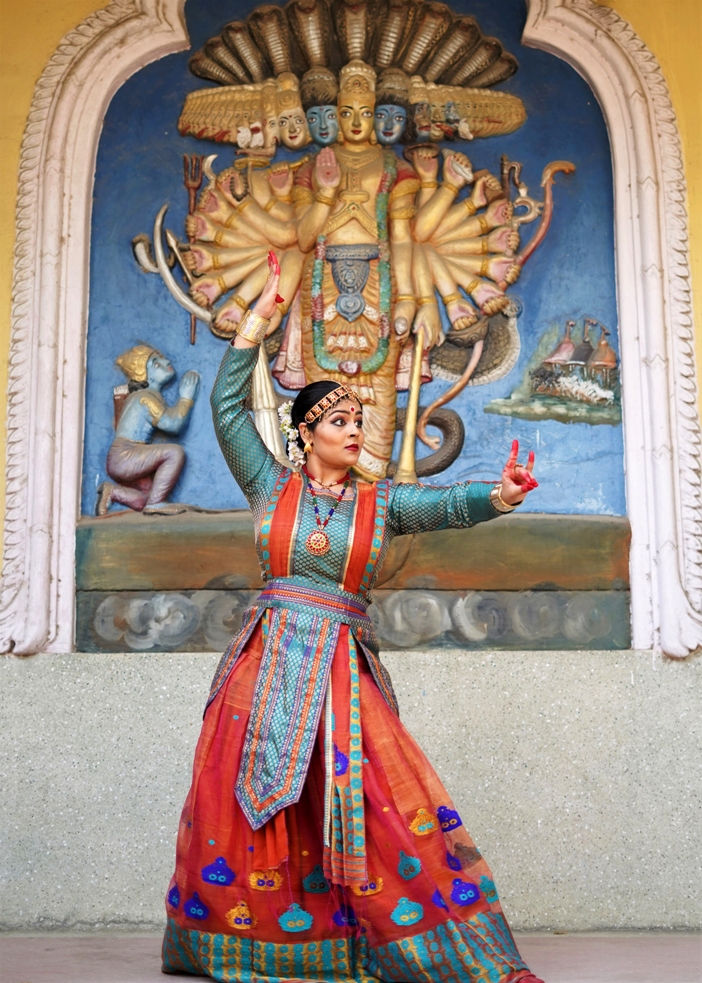
Kalki
Sangeet Natak Akademi awardees in the field of Sattriya Dance
Sangeet Natak Akademi Fellow ( Akademi Ratna)
-
- Jatin Goswami
Sangeet Natak Akademi Award
-
- Late Moniram Dutta Muktiyar Barbayan (1963)
- Late Bapuram Bayan Attai (1978)
- Late Roseshwar Saikia Barbayan (1980)
- Indira P. P. Bora (1996)
- Late Pradip Chaliha (1998)
- Late Parmanand Barbayan (1999-2000)
- Ghana Kanta Bora (2001)
- Jatin Goswami (2004)
- Gunakanta Dutta Barbayan (2007)
- Manik Barbayan (2010)
- Jogen Dutta Bayan (2013)
- Anita Sarma (2014)
- Sarodi Saikia (2015)
- Haricharan Bhuyan Borbayan (2016)
- Ramkrishna Talukdar ( 2017)
- Ranjumoni Saikia ( 2019)

great work hats off to you…..
Thank you ..
Amazing! Could I get address of any old Sattriya dance academy in Karnataka or Bangalore?
This is great. All content, with self explanatory photographs are just great. I love this page.
This is very helpful. Also the expressions were very beautiful. Keep up the good work Krishnakshi.
অশেষ ধন্যবাদ। বহু উপকাৰী তথ্য পালোঁ।
Very informative and so well-written (and illustrated)!